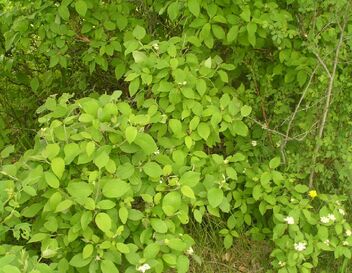The bush shaking technique is when you go around a cycle every day in your neighbourhood shaking every leafy bush and small shrubs to find night-flying insects that hide in them. It is best to carry a net so that any insect that is disturbed and flies out can be captured for close observation. Without a net it is very hard to see what you shake out, since most insects fly over a fence or over an out of bounds area, and other active moths such as carpets, emeralds and underwing moths are very shy and it is very hard to approach them, the net helps here. Don't worry is you miss a moth or lacewing, it is always good to believe that you will see it again sometime (eventually). It could take years to find all the moth species around your neighbourhood. Actually shaking the bush can be done with a net or foor (if you are careful...), I wouldn't worry too much about having a leaf or two fly off. You can try this once every day, and eventually you should get to know what shrubs have insects in more often.
Also, be careful of wasp nests, it is not a bad idea to always check bushes before you shake.

An example of a good hedgerow to try and search for moths.
In June the stats from the Edmonton area near the Southern Sackachewan River were:
76% of insects shaken were moths
13% of insects shaken were Chrysopa chi, a green lacewing
9% of insects shaken were Craneflies and assorted flies.
2% of insects were other green lacewing species
There won't be any more stats for a while since I don't live in that area anymore :(.
Suitable bushes[]
Suitable bushes are ones with lots of leafy growth and are in shade such as in the pictures. Shady bushes are more likely to have nocturnal insects since they always seek darker areas.

Another prime example of good shrubbery to use this technique on.